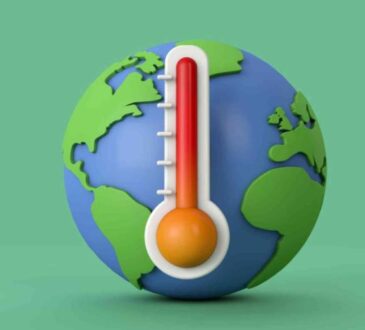Sustainable living: the world’s top ten ‘greenest’ countries –
Sustainable living is the goal of climate change efforts as the world seeks to reduce carbon emissions and reach net zero. Here are the world’s ‘greenest’ countries to live in.
Sustainable living specialists GreenMatch conducted a comprehensive study to find the most and least green countries in the world. Their study combined and compared four different reports: the Environmental Performance Index (EPI) from Yale University, a report from EU’s Joint Research Centre (JRC), Green Future Index (GFI) from Massachusetts Institute of Technology (MIT), and the IQ Air information platform.
Being “green” is a reflection of how much a country cares about preserving and restoring the natural environment and its resources as well as the health of its citizens.
In first place is Sweden. Sweden ranks highly across the studies, coming in 5th place on the EPI, 9th for the GFI, and 4th for the lowest annual average PM2.5 concentration at 6.6 μg/m³. Some of Sweden’s highlights are that it has a perfect score in the EPI for protecting marine ecosystems and it ranks second in the GFI’s CO2 emissions growth in transport sector indicator of sustainable living.
Coming in at first place is Sweden. Sweden ranks highly across the studies, coming in 5th place on the EPI, 9th for the GFI, and 4th for the lowest annual average PM2.5 concentration at 6.6 μg/m³. However, like most European countries Sweden’s main downfall is its CO2 emissions per capita, ranking only 28th place with 4.18 tonnes (4th in Europe). Some of Sweden’s highlights are that it has a perfect score in the EPI for protecting marine ecosystems and it ranks second in the GFI’s CO2 emissions growth in transport sector indicator.
Denmark is considered to be a pioneer in promoting sustainability, so it is no surprise that it ranks so highly. It has an impressive ranking on both the EPI and the GFI, 1st and 2nd place respectively. However, it does rank relatively lower in terms of its CO2 emissions per capita and annual average PM2.5 concentration. At 31st place with 4.43 tonnes for the former and at 16th place with 9.6 μg/m³ for the latter. One of Denmark’s highlights is that it comes out on top for the EPI’s wastewater treatment indicator. Which means 100% of its population is connected to a sewer system and 100% of its household wastewater is treated.
The UK has been making headway in recent years as it aims to meet its net zero target by 2050. Ranking 2nd for the EPI and 4th for the GFI, it is clear that the UK is determined to make a greener future a reality. However, it still has some work to do in regards to its CO2 emissions and annual average PM2.5 concentration. It ranks in 34th place with 4.66 tonnes for the former and in 13th place with 8.8 μg/m³ for the latter. The UK performs particularly well for climate policy, ranking 3rd in the GFI and 2nd in the EPI for this category.
Finland ranks 3rd on the EPI and 6th on the GFI. In particular, Finland excels in the GFI’s Clean Innovation pillar, ranking first. Furthermore, it achieves first place for the lowest annual average PM2.5 concentration with 5.5 μg/m³. Out of the four studies, Finland mainly needs to focus on reducing its CO2 emissions, as it ranks 45th place with 7.29 tonnes per capita. The nation is already implementing change and plans to reduce its dependence on fossil fuels by 50% by 2030.
Switzerland placed 9th on the EPI and 14th on the GFI. It scores relatively lower for its CO2 emissions per capita and annual average PM2.5 concentration. Ranking 27th with 4.07 tonnes and 20th with 10.8 μg/m³, respectively. Switzerland has a perfect score for both the EPI’s sanitation and drinking water indicators, meaning it has among the lowest DALY rates (age-standardised disability-adjusted life-years lost per 100,000 persons) in the world.
Next on the list is France, which ranks 12th on the EPI and 7th on the GFI. This nation produces 4.26 tonnes of CO2 emissions per capita, meaning it comes in at 29th. Furthermore, France has an annual average PM2.5 concentration of 11.4 μg/m³, making it 23rd on the list. In 2015, France became an early adopter of the United Nations’ Sustainable Development Goals. Therefore, it’s understandable why it ranks 4th place for the GFI’s Climate Policy pillar.
Costa Rica, the first non-European country on the list, is a true front-runner when it comes to creating a more sustainable future. It comes in 8th place for the lowest annual average PM2.5 concentrations with 7.8 μg/m³. Furthermore, it ranks 12th with 1.55 tonnes in regards to CO2 emissions per capita and 20th in the GFI. However, out of the 180 nations assessed in the EPI, Costa Rica only places 68th. Despite this, the EPI still gave Costa Rica a perfect score for SO2 growth rate, meaning it’s cutting emissions by ≥3.94% per year.
Iceland is considered to be the top nation by the GFI and ranks in 10th place in the EPI. It also has a low annual average PM2.5 concentration of 6.1 μg/m³, ranking 3rd place. However, Iceland’s CO2 emissions per capita have room for improvement as it ranks 56th with 9.23 tonnes. The government plans to achieve carbon neutrality by 2040 and be fossil-fuel-free by 2050, so we should see Iceland moving up the rankings in the coming years.
Norway ranks 20th on the EPI and 5th on the GFI. According to the GFI, it is leading in the area of Green Transport. Norway has an annual average PM2.5 concentration of 7.5 μg/m³ and 7.74 tonnes of CO2 emissions per capita, making it rank in 7th and 49th place respectively. In order to become even greener, Norway plans to reduce 90-95% of its greenhouse gas emissions (excluding sinks) from 1990 levels by 2050.
Ireland comes in 24th place on the EPI and 12th on the GFI. A highlight being that it ranks 3rd on the GFI’s Green Society pillar. Furthermore, Ireland ranks 9th for the lowest annual average PM2.5 concentrations with 8 μg/m³. However, Ireland only ranks 41st place for its CO2 emissions per capita with 6.68 tonnes. To address this, the government has created a Climate Action Plan which commits Ireland to reach net zero no later than 2050.




